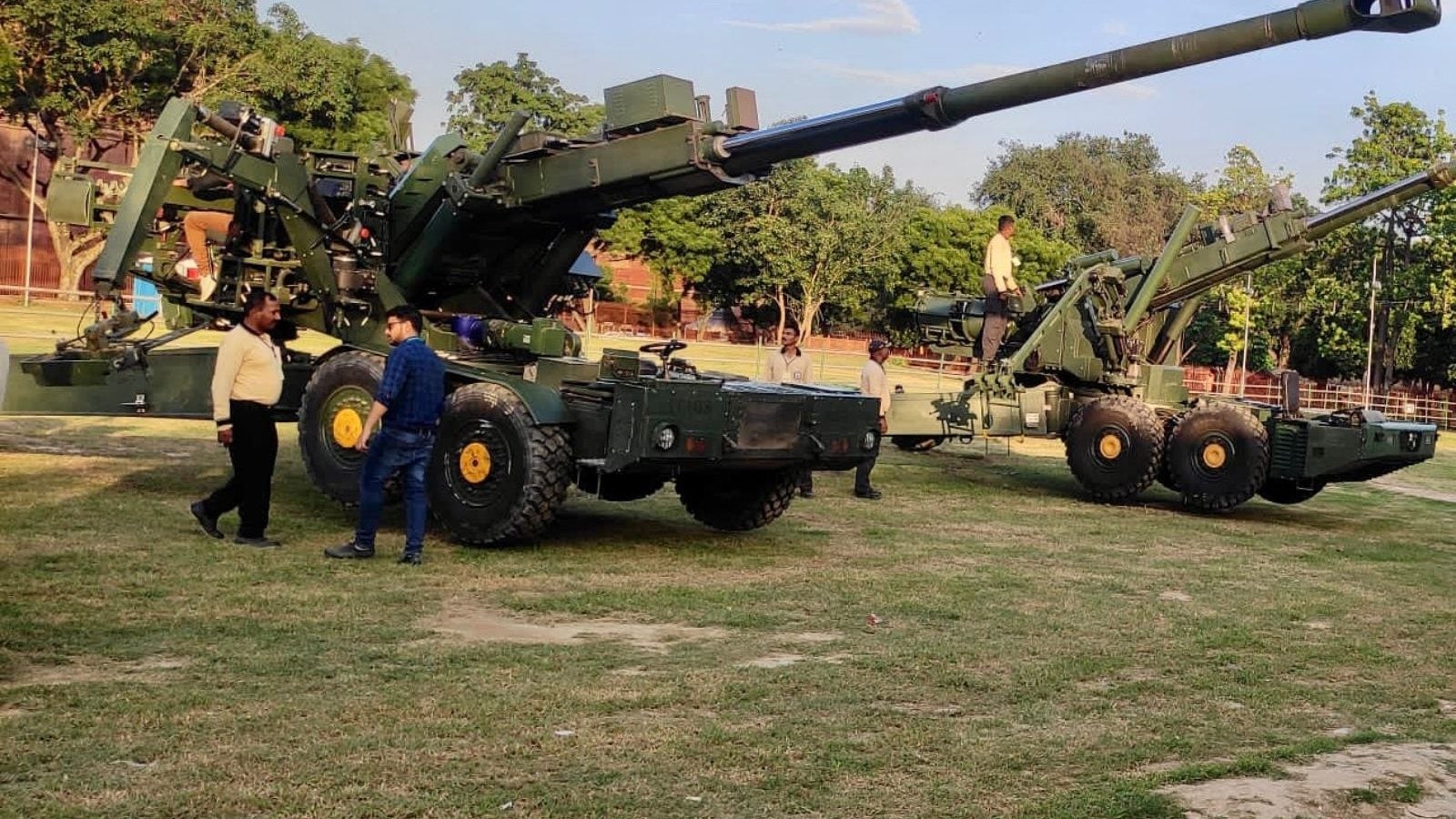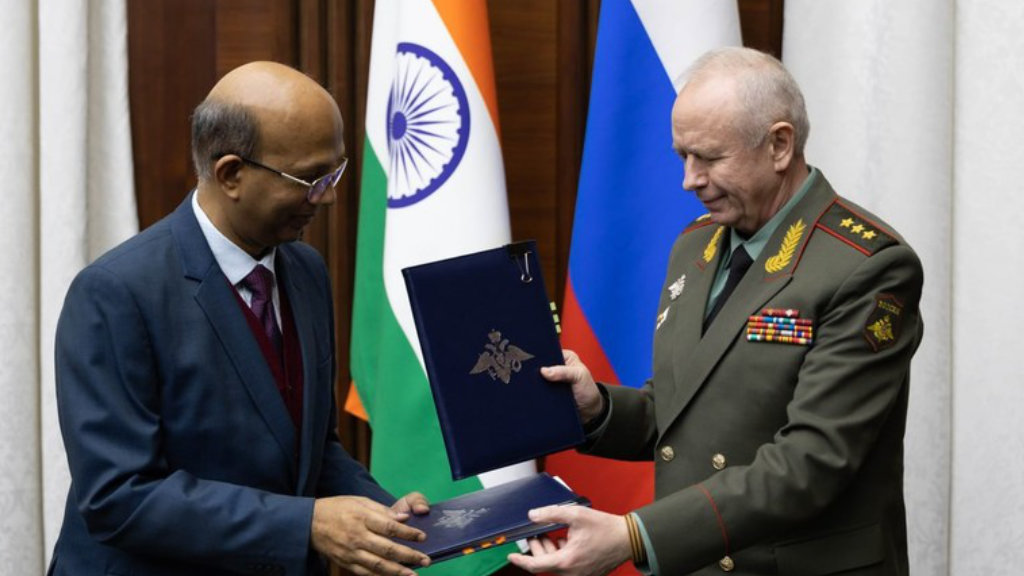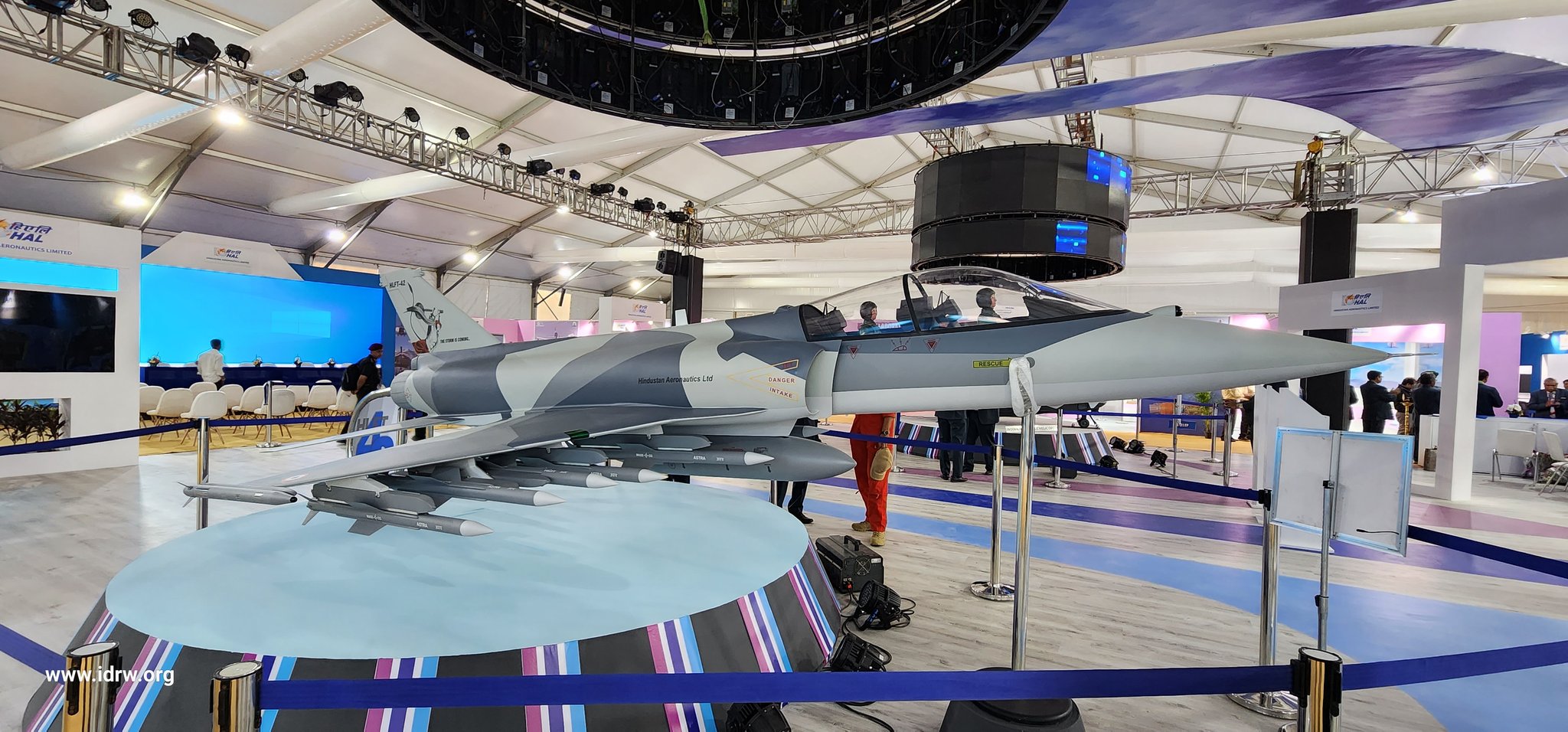SOURCE: AFI

In a bold assertion that could reshape the global fighter jet market, officials from Russia’s state-owned Rostec corporation have claimed that a “Made in India” variant of the Su-57 Felon, Russia’s fifth-generation stealth fighter, will be significantly cheaper than the Lockheed Martin F-35A Lightning II procured from the United States. Speaking to idrw.org at an unspecified defence event in early 2025, Rostec officials highlighted that the Indian-produced Su-57 would beat the F-35A’s current price tag of approximately $80 million per unit. While no official figure for the Su-57’s cost was disclosed, the claim has sparked speculation about India’s potential role in co-producing an advanced stealth platform at a fraction of Western costs.
The F-35A, a cornerstone of U.S. and allied air forces, has seen its flyaway cost drop to around $78-80 million per unit in recent years (as of FY 2024), thanks to economies of scale from large-scale production and ongoing optimizations by Lockheed Martin. However, this price excludes additional expenses like sustainment, training, and weapons integration, which can push the total lifecycle cost per jet well above $100 million. Rostec’s assertion suggests that a localized Su-57, leveraging India’s cost-competitive manufacturing ecosystem, could come in below this $80 million benchmark—potentially by a significant margin.
Continue readingSOURCE: AFI

On November 17, 1995, India marked a historic moment in its aerospace journey with the rollout of the first Light Combat Aircraft (LCA) Tejas prototype. Now, three decades later, in 2025, the country is set to witness another landmark event – the rollout of the Tejas MkII, a next-generation Indian fighter. This remarkable coincidence not only reflects India’s progress in indigenous fighter aircraft development but also symbolizes the evolution of the Indian Air Force’s (IAF) combat capabilities.
The original Tejas prototype, unveiled in 1995, was a testament to India’s ambition to reduce dependence on foreign aircraft and build a robust domestic defense ecosystem. Developed by the Defence Research and Development Organisation (DRDO) in collaboration with Hindustan Aeronautics Limited (HAL), the LCA program faced numerous challenges, including technological hurdles, delays, and skepticism. However, through perseverance and innovation, the Tejas evolved from a prototype into a fully operational platform, with the Tejas Mk1 and Mk1A variants now serving as critical assets in the IAF’s fleet.
Continue readingSOURCE: AFI

Waterfly Technologies, a startup incubated at IIT Madras, is pioneering a new mode of transportation with its electric seagliders. Positioned as a sustainable alternative to traditional air and ferry travel, these cutting-edge Wing-in-Ground (WIG) craft aim to transform coastal transportation with their innovative design and operational efficiency.
Seagliders leverage ground effect technology, allowing them to take off from water, maintain a cruising altitude of approximately four meters, and achieve exceptional fuel efficiency. With speeds reaching up to 500 km/h, they offer a unique blend of aircraft speed and boat-like maneuverability, all at a significantly lower cost compared to conventional aviation.
Continue readingSOURCE: AFI

Tata Advanced Systems Limited (TASL), a leading Indian aerospace and defence manufacturer, is proud to announce its participation in the International Defence Exhibition (IDEX) and Naval Defence & Maritime Security Exhibition (NAVDEX) 2025, held from February 17 to 21, 2025, at the ADNEC Centre in Abu Dhabi, UAE. Positioned at Stand 14-B38, TASL is set to captivate global defence leaders, policymakers, and industry experts with its state-of-the-art solutions in drones, optronics, and armoured mobility—demonstrating India’s growing prowess in advanced defence technologies.
IDEX and NAVDEX 2025, organized by the ADNEC Group in collaboration with the UAE Ministry of Defence and Tawazun Council, represent the world’s largest tri-service defence exhibitions, attracting over 1,565 exhibitors from 65 countries this year. Under the patronage of His Highness Sheikh Mohamed bin Zayed Al Nahyan, President of the UAE, the event showcases groundbreaking technologies shaping the future of land, air, and naval security. TASL’s presence at this prestigious gathering underscores its commitment to contributing to global defence innovation and strengthening India’s strategic partnerships in the Middle East and beyond.
Continue readingSOURCE: IDRW.ORG

The 2025 edition of Aero India, held at the Yelahanka Air Force Station in Bengaluru from February 10-14, has once again proven to be a pivotal platform for showcasing India’s advancements in aerospace and defense technology. Among the standout exhibits this year, Hindustan Aeronautics Limited (HAL) unveiled its rebranded Intermediate Jet Trainer-36 (IJT-36) Yashas, a significantly upgraded version of its long-troubled Hindustan Jet Trainer (HJT-36).
The aircraft, previously known as “Sitara,” has undergone extensive modifications to address its technical challenges, and HAL is now confident that the Yashas will soon enter production. Furthermore, HAL is positioning a weaponized variant of the Yashas for the export market, targeting countries seeking a low-cost combat trainer for operations in less contested airspace.
Continue readingSOURCE: IDRW.ORG

Bengaluru-based defense technology firm Tonbo Imaging has achieved a significant milestone with its WaveStrike high-power microwave (HPM) directed energy weapon (DEW) system, unveiled at the Aero India 2025 show in Bangalore. The innovative system, designed to neutralize hostile unmanned aerial vehicles (UAVs) and other electronic targets, has secured contracts from militaries outside the Asia-Pacific region, marking a notable success for India’s growing defense industry on the global stage.
The WaveStrike HPM DEW was a standout feature at Aero India 2025, held at the Yelahanka Air Force Station in Bangalore from February 10-14, 2025. This third-generation system, developed indigenously by Tonbo Imaging, integrates advanced HPM technology with search and track radars and an electro-optical (EO) system for precise targeting. Mounted on a trailer connected to a Light Mobility Vehicle (LMV) 4×4, the WaveStrike is designed for mobility and rapid deployment across diverse operational terrains.
Continue readingSOURCE: AFI

In a landmark move to bolster regional security and technological innovation, Mahindra Group, a global leader in engineering and technology, and Anduril Industries, a U.S.-based pioneer in autonomous systems, announced a strategic partnership on February 20, 2025. Unveiled on the sidelines of ongoing global defence exhibitions, this collaboration aims to co-develop and co-produce state-of-the-art Autonomous Maritime Systems, advanced AI-enabled Counter Unmanned Aerial System (CUAS) technologies, and innovative Command and Control (C2) software. The partnership positions both companies at the forefront of addressing emerging threats through cutting-edge autonomous solutions.
Mahindra and Anduril will jointly develop rapidly deployable AUVs tailored for Sector Security, Surveillance, Survey, and Reconnaissance (SSSR) missions. These modular systems will enhance underwater operational capabilities, enabling real-time intelligence gathering, mine detection, and seabed mapping. Designed for flexibility, the AUVs can be adapted to various payloads and missions, offering a scalable solution for maritime forces.
Continue readingSOURCE: AFI

In a groundbreaking development for India’s defence industry, Kalyani Strategic Systems Ltd (KSSL), a 100% subsidiary of Bharat Forge Ltd, has signed a Letter of Intent (LOI) with AM General, USA, at the International Defence Exhibition and Conference (IDEX) 2025 in Abu Dhabi. The agreement, announced on February 20, 2025, paves the way for the supply of advanced artillery cannons manufactured in India to the United States—a historic first for an Indian defence company. This milestone underscores the deepening defence ties between India and the U.S. and highlights India’s emergence as a credible player in the global defence manufacturing landscape.
The LOI marks a significant leap forward in bilateral defence collaboration, building on the momentum of recent India-U.S. strategic dialogues aimed at bolstering defence industrial cooperation. For the first time, an Indian firm will supply artillery cannons to the U.S., reversing the traditional flow of military hardware and showcasing the technological prowess of India’s private sector. KSSL, leveraging its extensive expertise in artillery systems, has partnered with AM General—a renowned U.S. leader in military vehicle platforms—to deliver cutting-edge solutions tailored to modern battlefield requirements.
Continue readingSOURCE: AFI

A prominent Pakistani defence analyst, Air Commodore (Retd) Zia Ul Haque Shamsi, has stirred debate by claiming that the Lockheed Martin F-35 Lightning II, if procured by India, would become a “white elephant” for the Indian Air Force (IAF) due to its exorbitant operational costs and persistent availability challenges. Speaking to regional media, Shamsi argued that the fifth-generation stealth fighter’s price tag—both in procurement and sustainment—exceeds even that of the IAF’s existing Dassault Rafale fleet, posing a logistical and financial burden that could undermine India’s air power ambitions. His critique draws parallels with the Pakistan Air Force’s (PAF) own struggles to maintain its F-16 fleet, highlighting a cautionary tale for India amid escalating regional rivalries.
Shamsi’s assertion hinges on the F-35’s well-documented operational expenses, which dwarf those of the Rafale, a 4.5-generation multirole fighter already in IAF service. The F-35A, the conventional takeoff variant most relevant to India, carries a flyaway cost of approximately $80 million per unit (as of FY 2024), with export prices often inflating to $100-110 million due to training, spares, and support. However, the real sting lies in its sustainment costs—estimated at $36,000 per flight hour by the U.S. Government Accountability Office (GAO), compared to the Rafale’s $16,500 per flight hour, as derived from French Air Force data and India’s 36-jet fleet experience.
Continue readingSOURCE: AFI

In a significant step toward deepening their decades-long strategic partnership, Russia and India have signed the Reciprocal Exchange of Logistics Agreement (RELOS), a defence logistics deal aimed at enhancing coordination in military exercises, disaster relief, and joint operations. The agreement was formalized following a meeting between Russian Deputy Defense Minister Colonel-General Alexander Fomin and India’s Ambassador to Russia, Vinay Kumar, as announced by Russia’s Ministry of Defence on February 19, 2025. This pact marks a milestone in the military cooperation between the two nations, reinforcing their commitment to a “particularly privileged strategic partnership.”
The RELOS agreement is designed to streamline logistical support between the armed forces of Russia and India, facilitating smoother access to each other’s military facilities for fuel, rations, spare parts, and berthing during peacetime and wartime operations. Russia’s Ministry of Defence underscored the pact’s importance, stating, “The parties noted the importance of the signed document for further interaction in the military sphere and confirmed their focus on consistently strengthening cooperation in the spirit of a particularly privileged strategic partnership.” This reflects a mutual intent to elevate operational efficiency and interoperability, particularly in joint military exercises and humanitarian or disaster relief missions.
Continue readingSOURCE: AFI

Cochin Shipyard Limited (CSL), India’s premier shipbuilding and repair company, is actively weighing joint venture (JV) options with global shipbuilding majors to fuel its ambitious expansion plans. As announced by Madhu S. Nair, Chairman and Managing Director, on the sidelines of ongoing industry engagements in early 2025, CSL is in advanced discussions with technical providers in Korea to establish high-quality block fabrication facilities and implement cutting-edge systems and processes. This strategic move, spotlighted during the International Defence Exhibition (IDEX) 2025 in Abu Dhabi (February 17-21), underscores CSL’s intent to elevate its capabilities and cement its position as a global maritime powerhouse.
CSL’s outreach to international partners comes at a pivotal moment for India’s maritime sector, which commands less than 1% of the $140 billion global shipbuilding market despite the nation’s 7,000 km coastline and growing economic clout. With an order book exceeding ?22,000 crore—encompassing 65 vessels, including 14 naval ships and 22 coastal ships for European clients—CSL is poised to capitalize on surging global demand for modern and green vessels. However, as Madhu S. Nair emphasized, the company’s existing infrastructure, while robust, requires enhancement to meet the accelerated turnaround times demanded by its new ?1,800-crore dry dock in Kochi, operational since January 2024.
Continue readingSOURCE: RAUNAK KUNDE / NEWS BEAT / IDRW.ORG

At Aero India 2025, held in Bengaluru earlier this month, the world caught its first glimpse of the Hindustan Aeronautics Limited (HAL) CATS Warrior, a nearly 2-ton loyal wingman Unmanned Combat Aerial Vehicle (UCAV) that has generated significant buzz in defence circles. Officially announced to take to the skies later this year, the CATS Warrior showcased its potential as a force multiplier for the Indian Air Force (IAF), operating alongside manned fighters like the Tejas and Su-30MKI.
However, what flew under the radar during the event was the possible development of a larger, more formidable strike UCAV platform, often referred to as the CATS Warrior 2. According to HAL officials speaking to idrw.org, this bigger platform is still in the early design phase, with plans for a 13-meter-long aircraft boasting an All-Up Weight (AUW) of nearly 5 tons, potentially powered by twin HTFE-25 (Hindustan Turbo Fan Engine) 25 kN turbofan engines.
Continue readingSOURCE: RAUNAK KUNDE / NEWS BEAT / IDRW.ORG

Kolkata-based technology firm Drones Tech Lab has made headlines by winning the iDEX ADITI Edition 1.0 challenge, a prestigious initiative by the Ministry of Defence (MoD) aimed at fostering innovation in India’s defence sector. The firm showcased its Raptor UAV, a helicopter-launched drone, at Aero India 2025 in Bengaluru, marking a significant step forward in enhancing the Indian Air Force’s (IAF) capabilities through Man-Unmanned Teaming (MUM-T).
The iDEX ADITI Edition 1.0 challenge, launched to identify Indian startups capable of developing cutting-edge weapon systems for the IAF, sought a helicopter-launched drone with a range of over 40 km and MUM-T capabilities. Drones Tech Lab’s Raptor UAV emerged as the winner, impressing evaluators with its innovative design and ability to meet stringent requirements. The challenge emphasized compatibility with existing infrastructure, precision targeting, and advanced guidance, and the Raptor delivered on all fronts, positioning Drones Tech Lab as a leader in India’s burgeoning drone technology sector.
Continue readingSOURCE: RAUNAK KUNDE / NEWS BEAT / IDRW.ORG

Hindustan Aeronautics Limited (HAL) officials, speaking to idrw.org at Aero India 2025, provided an update on the proposed Hindustan Lead-in Fighter Trainer (HLFT-42), a next-generation supersonic trainer jet that made its debut at Aero India 2023 but was notably absent from this year’s event in Bengaluru. The aircraft, initially unveiled as a versatile platform capable of serving as both an advanced trainer and a light combat jet, is undergoing further refinements in design and additional features following detailed feedback and discussions with the Indian Air Force (IAF).
Since its initial showcase at Aero India 2023, the HLFT-42 has been in a phase of continuous improvement. HAL officials revealed that the IAF, during subsequent talks, provided valuable insights into the aircraft’s design, performance, and potential applications. These discussions have led to a comprehensive refinement process, not only in terms of aerodynamics and structural design but also in enhancing its avionics, weapon integration, and operational flexibility. Wind tunnel testing and simulations have been key components of this process, ensuring that the HLFT-42 meets the high standards required for both training and combat roles.
Continue readingSOURCE: AFI

During a recent test at Aero India 2025 it was revealed, that the UTTAM Radar, developed by the Defence Research and Development Organisation (DRDO), successfully tracked the Light Combat Aircraft (LCA) Mk-1 at an impressive range of 140 kilometres. This demonstration highlights the radar’s capabilities, especially considering that the LCA Mk-1 has an estimated Radar Cross Section (RCS) of over 1 square meter, making it a relatively small target to detect. The radar, equipped with approximately 900 Transmitter-Receiver (TR) modules, offers advanced tracking capabilities, and its performance has significant implications when compared to other aircraft, such as the Pakistani F-16 and JF-17.
The test, which tracked the LCA Mk-1—a relatively small platform—at 140 kilometers, demonstrated the radar’s impressive capability to track targets with low RCS. The small size of the LCA Mk-1 makes it a difficult target for many radars, which typically struggle to detect aircraft with RCSs of 1 square meter or less. This radar range sets a high bar for future air combat capabilities.
Continue reading